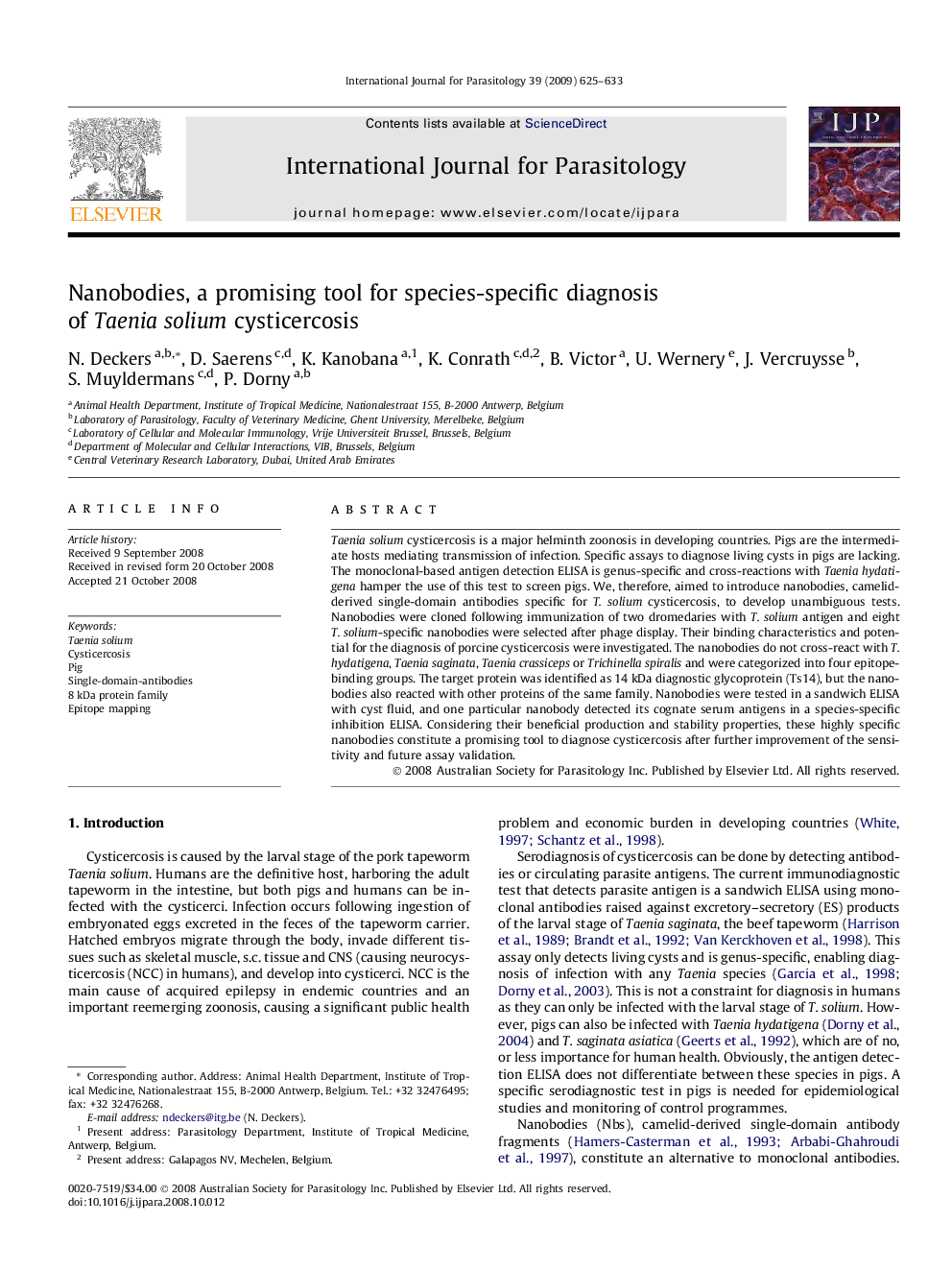| Article ID | Journal | Published Year | Pages | File Type |
|---|---|---|---|---|
| 5789542 | International Journal for Parasitology | 2009 | 9 Pages |
Abstract
Taenia solium cysticercosis is a major helminth zoonosis in developing countries. Pigs are the intermediate hosts mediating transmission of infection. Specific assays to diagnose living cysts in pigs are lacking. The monoclonal-based antigen detection ELISA is genus-specific and cross-reactions with Taenia hydatigena hamper the use of this test to screen pigs. We, therefore, aimed to introduce nanobodies, camelid-derived single-domain antibodies specific for T. solium cysticercosis, to develop unambiguous tests. Nanobodies were cloned following immunization of two dromedaries with T. solium antigen and eight T. solium-specific nanobodies were selected after phage display. Their binding characteristics and potential for the diagnosis of porcine cysticercosis were investigated. The nanobodies do not cross-react with T. hydatigena, Taenia saginata, Taenia crassiceps or Trichinella spiralis and were categorized into four epitope-binding groups. The target protein was identified as 14Â kDa diagnostic glycoprotein (Ts14), but the nanobodies also reacted with other proteins of the same family. Nanobodies were tested in a sandwich ELISA with cyst fluid, and one particular nanobody detected its cognate serum antigens in a species-specific inhibition ELISA. Considering their beneficial production and stability properties, these highly specific nanobodies constitute a promising tool to diagnose cysticercosis after further improvement of the sensitivity and future assay validation.
Related Topics
Life Sciences
Immunology and Microbiology
Parasitology
Authors
N. Deckers, D. Saerens, K. Kanobana, K. Conrath, B. Victor, U. Wernery, J. Vercruysse, S. Muyldermans, P. Dorny,
